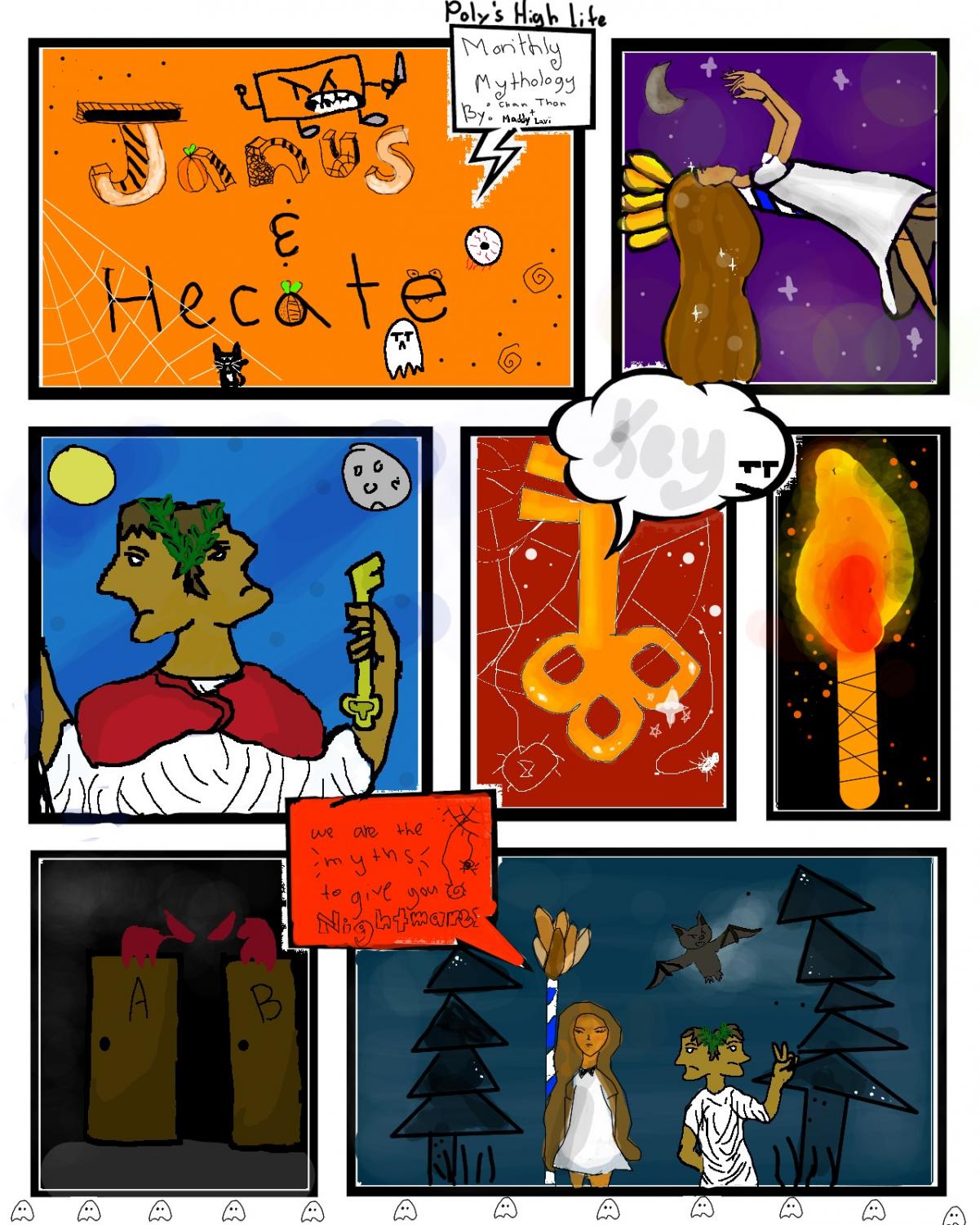Dionysus
On Christmas Day, a Greek God called Dionysus was born. Dionysus was the son of Zeus and Semele. Unfortunately, when Semele was pregnant with Dionysus, Semele was burnt to crisp; however Zeus managed to save Dionysus by granting him immortality and from then on, he was referred to as “the one twice-born.” (which referred to his prenatal birth and then his actual birth from Zeus).
As a God, Dionysus was known as the god of wine, pleasure, festivity, vegetation, and frenzy; Compared to the rest of the Gods, he seemed the most fun to be around, mostly because Dionysus spent his life traveling around the world and was one of the very few Greek characters who were able to successfully bring back a dead person from the underworld.
Dionysus made a lasting impact on Greek society. Four times a year, the Athenians and citizens in Greece would come to worship Dionysus. The Greeks would sing, drink large amounts of wine, dance, and revel in a state of madness to honor Dionysus. At a point, a contest was formed to honor the best tragedy, where three tragedies and one satyr play would be shown. Due to these celebrations, Dionysus drove the development of Greek Theaters. To this day, Dionysus has an impact on Western society, as greek theaters would then influence western theaters, giving us a platform to watch the Nutcracker and a Christmas during the holidays.
Huitzilopochtli
Huitzilopochtli, the god of war and the sun, was known as a principal deity in Aztec society. Huitzilopochtli is interpreted as “The Hummingbird of the South” or “Blue Hummingbird on the Left” where Aztecs believed that deceased warriors reincarnated as hummingbirds and Aztecs considered the south to be the left side of the world. Thus, his name takes a deeper meaning as the “resuscitated warrior of the south.” Huitzilopochtli is also known as Uitzilopochtli, Xiuhpilli (Turquoise Prince), and Totec (Our Lord). His calendar name is Ce Técpatl and his nagual, or animal spirit, is an eagle.
In one version of events, Huitzilopochtli was the son of Omecίhuatl and Ometecuhtli– the male and female aspects of the primordial god Ometeotl. Alternatively, Huitzilopochtli is the son of the earth goddess Coatlίcue, born in the Coatepec Mountains. Huitzilopochtli avenged his mother after she was killed by her children Centzonhuitznahuac and Centzonmimizcoa. Huitzilopochtli dispersed them in the heavens to become the northern and southern constellations. His sister, however, Coyolxauhqui was the first to fall as he defeated her as he was born from his mother’s corpse and flung her head to the sky, which resulted in the creation of the moon. The conflict between Coyolxauhqui and Huitzilopochtli was thought to happen daily as the exchange for the control of the sky between the sun and the moon. Huitzilopochtli was thought to be accompanied across the sky by the spirits of fallen warriors (later reincarnated as hummingbirds), and from noon was accompanied by Cihuateteo or spirits of women who died during childbirth. Night arose as Huitzilopochtli moved through the Underworld until dawn, where the cycle continues.
The Aztecs believed Huitzilopochtli guided them from the sacred cave of Aztlan to the Valley of Mexico, founding the city of Tenochtitlán in 1325 CE. During the journey, priests carried his image of a hummingbird on their shoulders, with his voice giving orders at night. Huitzilopochtli’s first shrine was built on a spot where priests found a eagle poised on a rock devouring a rock devouring a snake, an image so striking that it is portrayed on the Mexican flag.









